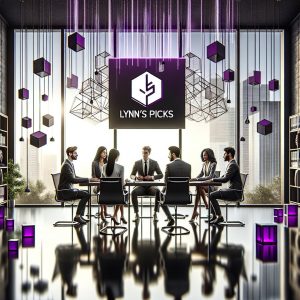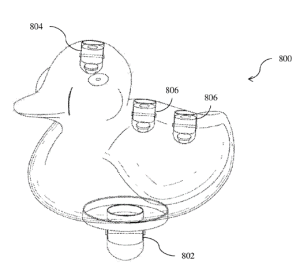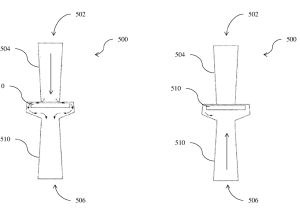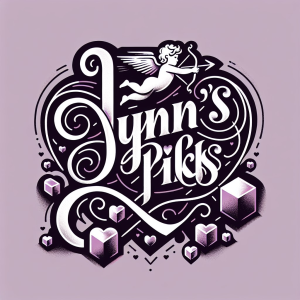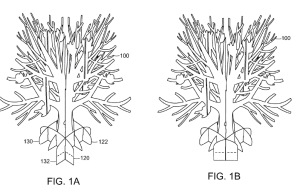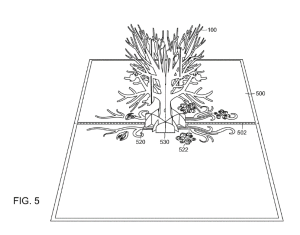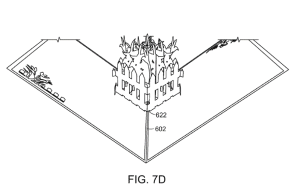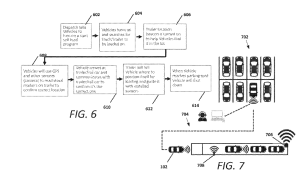Lynn’s Picks: Foresight’s Patent of the Week – US Granted Patent 11,905,190: Reusable bath bomb vessel (Andrew Dillow)
Disclaimer: This blog was created for informational purposes only and does not represent Foresight’s or the author’s opinion regarding the validity, quality or enforceability of any particular patent covered in this blog. Foresight is not a law firm and no portion of the information contained in this blog was intended to serve as legal opinion.
As a parent, I am well versed in the struggle with the daily routine of giving my 5-year-old son a bath or a shower. In the beginning there were aisles worth of inventions to contain a newborn in the sink, such as this “Thermally buffered, circulating clean water flow, universal, temperature indicating baby bathing tub”. Then my son graduated to the standard set of bath toys such as this “Toy Duck” which was protected by a design patent filed in 1947 by sculptor Peter Ganine. However, recently I made the mistake of pointing out a bath bomb to my son on a routine trip to CVS and ever since, whenever it is time for a bath, he now requests a bath bomb instead of the plethora of toys at his disposal. If you are unsure of what a bath bomb is, they are single use, spherical blends of effervescent material that usually includes scents, such as fragrant extracts and essential oils, that dissolve when placed in a bath, a picture of a typical bath bomb can be found below:
As the lore goes, bath bombs were first invented by Mo Constantine in her garden shed in 1989 after being inspired by Alka-Seltzer tablets and her first design was named Aqua Sizzlers. Fast forward to 2024 and there is a growing market for bath bombs targeting children, including bath bombs with Paw Patrol characters inside, Grinch inspired bath bombs, and bath bombs with hot wheels inside.
Amongst a sea of bath bomb options, the pick for this week combines the excitement of a bath bomb with a more environmentally friendly approach that no longer includes disposable packaging and plastic wrap for each single use bath bomb. The pick of the week is patent number 11,905,190, titled: “Reusable Bath Bomb Vessel” was created by inventor Andrew Dillow. When selecting the patent of week, I try to identify something that is either new technology that I feel should be highlighted or is something I come across in the patent gazette that sticks out as something I should have thought of and could immediately use in my day-to-day life. The reusable bath bomb vessel falls under the latter category, as I could easily see myself, and my son, filling the vessel with the desired bath bomb materials as we fill the bathtub, as seen in the image below:
In addition to the functional benefit of having the option to create out own bath bombs, Mr. Dillow considered the various embodiments of the claimed invention which includes various forms of the vessel. These forms can be spherical, like a typical bath bomb, or can take the shape of a duck or other bath themed configurations. While other companies are focusing on what toys can be added to the inside of a bath bomb, this patent shows the potential appeal of the vessel itself being the toy in addition to the bath bomb.
This patent was not selected simply based on the ability to have a duck shaped reusable bath bomb; there are technical features included in the claimed invention that enhance the performance of the vessel. While the ability to open and close the vessel to add the bath bomb ingredients is necessary for it to be a reusable vessel, the inventor also considered the movement of water and the release of effervescent material when drafting the claims. Included in the claims are a series of influx one-way valves, as seen below, to allow water to enter the inner chamber and react with the effervescent material when submerged in water.
These inlet valves are also pressure valves which close when the internal pressure of the chemical reaction begins. This increasing pressure would be a safety risk, but-for the inclusion of outflux holes which also contain a one-way valve configured to eject effervescent material from the inside of the vessel into the bath while preventing further water intrusion. An additional benefit of this pressure build-up and release mechanism, as described in the patent, is the ability to orient the outflux holes in such a way to cause a desired propulsion effect, such as spinning or moving in a certain direction. This inventor really thought about all the different aspects of creating your own bath bomb, and I really look forward to seeing this product in the market soon!
Have you come across any interesting patents you would like us to feature in future blogs or did you invent a technology you would like featured? Please send us an email at media@foresightvaluation.com or call our office at (650) 561-3374.
